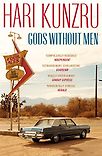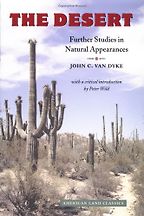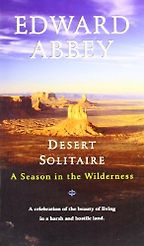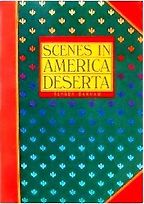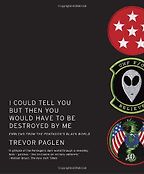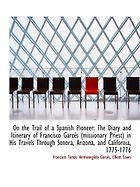Tell me what your interest in the Mojave desert is and why we’re talking about it.
It started several years ago through chance. I was taking a road trip from LA to Joshua Tree. I’d never been to the desert before and it made a peculiar impression, not just because of the emptiness of the landscape but also because of the forgotten nature of the places and towns there. It’s still California but it’s all the stuff that coastal California doesn’t want to be dealing with, that it shoves out into the desert. People abuse the desert. They use it for missile testing, they set up meth labs there, they go and bury bodies. It’s a periphery, a mysterious place. I was in between projects and I ended up writing a short story that grew and grew and grew, and is now a 140,000 word novel.
What’s the plot?
Well, the novel concerns a New York couple whose four-year-old autistic son goes missing in the national park in Joshua Tree. It deals with them and their search for the boy, and the fact that they become the objects of a media witch-hunt. Then that story is connected to a lot of other stories all set in the same physical location, which is this imaginary rock formation out in the Mojave desert. There are various characters and various times that thread through the book.
That takes us into your first book choice, The Itinerary of Francisco Garcés.
Francisco Garcés was one of the real people I became interested in. He was the Franciscan monk who was sent out to oversee the mission at San Xavier del Bac, which is modern day Tucson. This place was an absolute backwater, and a cruel and oppressive place for the Indians who were attached to the mission. Garcés was quite an extraordinary character. He went exploring on his own, from tribe to tribe, right out into the desert – unarmed, often on foot, and usually carrying only a cross and an oil painting that had a picture of the Virgin on one side and on the other a particularly lurid picture of a sinner damned to hell. Having no common language with the Indians, he would attempt to convert them using this visual aid. He would do this for months at a time. He was actually the first literate person to travel across that desert and make an account of it in the 1770s, so he features in my novel.
Next is The Desert by John C Van Dyke.
Before Van Dyke wrote this book, the general opinion of the desert was that it was a pretty terrible, scary place. People remembered the pioneer parties getting lost as they crossed the Great Basin and eating each other alive, so it was a terrifying place. He was the first person to propose that the Western desert might be beautiful, but it turned out that he was something of a charlatan. He was a Rutgers art professor in the 1880s and a total New York, urban guy. He was the art consultant for one of the railroad barons, and he announced that he’d taken this extraordinary journey across the desert in the heat. He’d battled Indians and coped with thirst and hunger, and brought back this book with incredible visual descriptions of the landscape. It turns out that he had a cousin with a ranch in the area, had taken a train trip to see his cousin, and probably didn’t do anything except a little light riding around the ranch.
That’s brilliant.
You notice in the book that it’s totally depopulated, there’s never a mention of another person in the book. It’s just him with his art connoisseur’s eye and the shifting sunlight across the desert landscape. But it is a book that completely changed the American idea of what the Western desert could be, and Sierra Club hikers will still carry it around. It’s a beautifully written book. It is amusing that he slightly faked up the one-man-versus-the-elements story, but it was a book that changed the aesthetics of the desert.
Don’t you find those stories about journalists who make things up so chilling? I mean, the horror of being found out.
Hence the hideous experience of being fact-checked by any major US publication. But he completely got away with it. It was only about a century later that people suggested that he might not have been the daredevil that he claimed to be.
So he romanticised the desert or he made it seem a more macho place to be? Or both?
Both and neither. The book is a very fine description of things that you can see, but it is oddly bloodless. He claims in the introduction to have had this romantic time, but he doesn’t tell tall stories about Indian fighting for most of the book. He was received uncritically as someone who had gone on a solo journey. And it really doesn’t matter. It doesn’t undermine the book that he had a much more comfy way of visiting the desert than he made up. It’s just this individual connoisseur and his eye. It’s an art critic’s book, which is actually why it became so influential, because it became fashionable to like this landscape.
Your third book is Desert Solitaire by Edward Abbey.
People know Edward Abbey more for The Monkey Wrench Gang, about a group of green terrorists in the 1960s. He was a pioneer of the modern environmental movement, and as a young guy he got a job in Utah in a national park called Arches. It’s an extraordinary red stone landscape, incredibly wild and bleak, and he was out there when there wasn’t any real road going into the park. He’s a bilious character – an environmental grump who hates the idea that the park is going to build a properly surfaced road to allow tourists to get in. He thinks the only people who should be allowed this experience are people who are prepared to hike in, and do battle with scorpions and snakes and so on. But he has a deep love for this place and he’s amusing to read because he’s such a strong personality. His writing about Southern Utah is extraordinary. He was doing this in the 1950s and 60s; he’s been dead for a long time now. He was a polemicist about preservation of these landscapes. They were thought of as places you could do anything to, and the desert would survive it.
Scenes in America Deserta by Reyner Banham.
Yes, this is the British entry. Banham is known as an architecture critic. He wrote an influential book on Las Vegas. There’s a funny thing about the Western desert – a lot of the best books on or about it are by foreigners, because Americans don’t feel it’s worthy of attention. Banham, in a way, is doing something a lot of Europeans have done. He spent a lot of time in the Mojave, mostly, and when he first went there he hadn’t really got anything to compare it to. The thing that he found closest was the heath in Norfolk [in the east of England] where he grew up, so this guy was staring at these huge open spaces and thinking of Norfolk, which I find rather charming. There are also some rather eccentric pictures of him riding a bicycle round a dry lake with a big cowboy hat on.
Is it written in scenes and vignettes?
Yes, it is. He has thematic sections. There is a chapter called “The Inscrutable”, which I think is a good way of thinking about what is odd about the desert. The more time you spend there, the more you become convinced there’s something going on below the surface, or that there is something the desert could potentially reveal to you. My theory is that this is what leads so many people into mystical and religious visions. Whether it’s UFO-based or a more religious thing, there is a sense that this vast emptiness is about to disclose something. He captures that very well.
Isn’t it the case – and people say similar things about the Arctic – that you plunge into a kind of existential angst when you are alone in a desert? What is about to be revealed is whatever it is you are trying to keep secret in your unconscious.
Absolutely. In some way you expand to fill the space. You can misrecognise things that are going on in your own consciousness and think these things are there in the landscape. The Romantic category of the sublime is applicable, the terror of somewhere so remote. I’ve been walking in areas of Death Valley where there aren’t even any insects, and the silence is so absolute it starts to become a physical weight on your ears. It becomes a tangible thing, especially for somebody from Europe I think. It’s simply not possible to occupy space in the same way in Europe. You can get into mountains and forests and be away from other people, but these vast vistas with no mark upon them and no life of any kind – there is nothing like that in European experience.
The next one has a fantastic title. I Could Tell You But Then You Would Have To Be Destroyed By Me.
Yes. Trevor Paglen occupies a strange position between being a geographer and artist who gets gallery shows, and a researcher with a political bent. He became interested in the geography of the West, partly because it is an area that is so underused. It’s where America goes to do stuff that is dangerous or dirty. There’s a group called The Center For Land Use Interpretation which has done a lot of work recording various sites and infrastructural things, from mining to abandoned theme parks out in the desert, and he’s doing something similar. This particular book is part of a long project of his, trying to trace the contours of the secret state. He’s combed through budgets and tried to find out what appropriations are given to secret work. This book is a side-effect of that. It’s a collection of military patches that are worn by mostly air force people.
You mean the things they sew onto their sleeves?
Exactly. Woven patches, like scout patches. It’s a thing these air force guys do, get a patch made for every project they’ve been on. Oddly, these patches are the only public face of some of these secret projects. He has collected hundreds of them and he analyses the iconography. Some of them are utterly obscure. One I’m looking at is just a smiley face on a dark background and it says “Project Dipper – We Make Threats, Not Promises”. Each one is accompanied by a very short piece of text, of what he can find out about the projects. For example, “This patch represents an unknown project undertaken by the 413th flight test squadron. We make threats might refer to making simulated or real electronic threats against aircraft.” There’s a lot of bad pseudo Latin. There’s one called “The Triangulum” which is a strange wedge plonked on a map of the world, going through Europe. There’s one completely black patch that says “If I Tell You I’ll Have To Kill You”. The title of the book is a kind of Englishing of a dog-Latin phrase that one of these patches uses.
What was the project for that one?
It’s a black patch with a red border and the dog-Latin at the top. It’s apparently a generic insignia for black projects conducted by the Navy for air tests from Evaluation Squadron 4, based in California.
That’s not very illuminating, is it?
No. None of them are very illuminating. You just realise how much is going on behind the scenes. These could vary from satellite launches, through to missile tests, communications or testing new secret aircraft. When you drive around the desert you are constantly coming up against huge tracts of land, the size of Wales, that are completely off-limits. I spent time in 29 Palms, which is a service town for the largest marine base in southern California. That’s where they go and do a lot of combat training for Iraq. They have whole simulated Iraqi and Afghan towns in the desert. I ended up using this in the novel because they hire role players – real Iraqis to go and play Iraqis, and they end up having their houses raided again and again and again. When I was presenting this in New York, somebody came up to me and said he’d just come back from a tour of duty and was reminiscing about the same training programme on the east coast, in North Carolina, where there was a simulated Iraqi town in a forest. So they had all these people dragging around pretending to be in Iraq in the middle of a damp wood.
Get the weekly Five Books newsletter
The marines are out there too. There’s a missile testing range in New Mexico – hundreds and hundreds of square miles where they shoot the crap out of stuff. There’s Edwards airforce base, there’s Area 51 north of Las Vegas – in a dry lake, a salt flat, an extremely remote area. They test experimental aircraft there. There’s a place called Yucca Mountain where they’re intending to store all the radioactive waste. All these places co-exist with a scrubby network of little towns. There are plenty of empty highways with signs by the side of the road saying that you must on no account stop unless it’s an emergency.
Image by Rennett Stowe on Flickr
July 1, 2011. Updated: February 19, 2023
Five Books aims to keep its book recommendations and interviews up to date. If you are the interviewee and would like to update your choice of books (or even just what you say about them) please email us at [email protected]
Five Books interviews are expensive to produce. If you've enjoyed this interview, please support us by donating a small amount.

